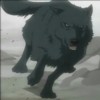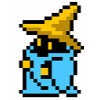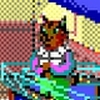Shin Megami Tensei: Persona 4 (PlayStation 2) review"The character imbalance may irk some fans but doesn't actually make the game less fun, and for the most part Persona 4 has its own identity, plot, and tone wholly independent of Persona 3's. Given what a massively influential title Persona 3 was, and how easy it would've been to make the entirety of Persona 4 about reminding you how much you liked Persona 3, the fact that Persona 4 is an actual interesting game in its own right is really a bit extraordinary." |
Given that I have posted all of two reviews to HonestGamers, I am probably going to convince regular site readers that I am slightly schizophrenic. I really disliked the last game I reviewed, oh, two years ago, while Persona 4 is getting a perfect score on the HonestGamers scale. All I can really say, both as a fan of RPGs and of the Shin Megami Tensei series in particular, is that it really is just that good. It is, in fact, a completely extraordinary game. You should not pass on this game because it is an “inferior” PS2 release. If anything, the fact that it's shipping at a budget $39.99 price - not much less than the cost of a used PS2 these days – means you have little excuse for not playing it. (Besides, I don't know, having a job or responsibilities or what-have-you.)
Before I get into the praise of Persona 4, I will note that there are aspects of the game that some players will take as flaws. Long-time fans of the PS2 Shin Megami Tensei titles may note that the bulk of Persona 4's 3D persona models are recycled from prior games. Most of the engine basics are recycled from Persona 3, and in some cases were not updated when perhaps they should have been. The combat AI, for instance, has difficulty using some new types of Skills and the Guard command intelligently, probably because these options weren't available at all in Persona 3. Some of your party members have curiously imbalanced move sets, and there is a strange segment of story roughly in the middle of the game where the plot stops to try and remind you how much you liked Persona 3.
None of these flaws, by themselves, are really serious. The spartan graphics do not negatively impact the gameplay, since the 3D models are only seen briefly (and combat is so tactical you quickly stop focusing on animations). You can control your characters directly in Persona 4, something Persona 3 never allowed, so failings of the AI are no longer as significant. While the AI is very good at speeding up dungeon crawls, taking control of your own party members for major boss battles helps the experience feel more tense and immersive (and certainly less frustrating). The character imbalance may irk some fans but doesn't actually make the game less fun, and for the most part Persona 4 has its own identity, plot, and tone wholly independent of Persona 3's. Given what a massively influential title Persona 3 was, and how easy it would've been to make the entirety of Persona 4 about reminding you how much you liked Persona 3, the fact that Persona 4 is an actual interesting game in its own right is really a bit extraordinary.
Now, on to the praise of Persona 4. The game takes an unusual premise for an RPG in just about every way. Instead of trying to defeat abstract Evil or save the world, you're trying to solve a murder mystery. Instead of sending you out to explore some sprawling world, you are instead restricted to the rural town of Inaba and the mysterious TV World connected to it. Only certain special people can enter the TV World, which is populated by abstract monsters called Shadows. The Shadows can only be fought off with the power of a Persona, a mythic or folkloric figure that expresses the character's psychological strengths and weaknesses (in the form of magic lightning and massive pummelings). Because the setting of Persona 4 is so traditionally Japanese and intimate, the mythology for the Persona of the seven playable characters is grounded entirely in ancient Japanese myths. Some are incredibly obscure and fun to learn about, while others are explained in the course of the game. All of the ways that Persona 4 uses its mythology are incredibly significant, moreso than Persona 3, and this adds rich layers of meaning to virtually every major action you take in-game.
Where Persona 3 confined its action to the singular dungeon of Tartarus, Persona 4 uses a variety of dungeons that are extremely interesting on a lot of different levels. While still randomly generated, each Persona 4 dungeon generates particular types of maps, and treasure chests contain particular assortments of items. There are now Rare Chests, which you have to open with Chest Keys but that almost always contain something spectacularly useful. Each dungeon is the creation of a specific person's fears and self-loathing, each dungeon has a unique tileset that adds much-needed visual diversity to combat, each dungeon has a unique theme song, and of course each dungeon has a totally unique set of Shadows. Each Shadow drops a material that you can take to the weaponsmith Daidara to unlock better weapons and equipment once you've gathered enough.
Encounters with Shadows aren't truly random, but instead triggered by interacting with monster-icons that roam the hallways. You can give yourself initiative by attacking them, or run away from them if you're not interested in combat. That said, chances are you'll fight everything you can most of the time, both to acquire material drops but also because combat is very fun. Persona 4 uses the same “1 More” system Persona 3 did, and Shadows are still very nasty and threatening enemies by RPG standards. In fact, they are often more threatening than actual dungeon bosses, who themselves aren't pushovers. Getting through battles is a matter of carefully exploiting an enemy's elemental weaknesses while protecting your own party from similar attacks, and virtually every victory in a new dungeon is an elating, satisfying experience. Gathering and fusing new Persona is more fun than ever, since your control over your party makes more different types of build for the protagonist viable. While your other characters go through the game with just one Persona and skillset, your protagonist can equip any of over 200 Persona and fill any party role you can image.
Combat is only half of the gameplay in Persona 4. The other half is strictly social, mostly focusing on building up your relationships with others (S.Links), and building up your own personal stats. Your personal stats affect how you can interact with others in dialogue trees, what gameplay options you can unlock, which S.Links are available, and how well you can do in certain mini-games like fishing and taking exams. S.Links take you through compelling little sidestories about the other characters in the town of Inaba (and with all of your party members), and finishing them out rewards you with a key item that lets you fuse up a certain powerful Persona in the game's Velvet Room that you can't otherwise make. Each S.Link corresponds to a Major Arcana of the Tarot, as do your Persona, and you also get bonus experience applied to creation of fused Persona based on how strong your S.Link with that Arcana is. The interplay between the use of Persona and the game's social aspect is fascinating (you can raise S.Links faster by carrying the Persona), and means that the game does not lose depth the moment you step out of the dungeon. If anything, navigating the social game in Persona 4 can be far more complicated.
Atlus's reputation as one of the top localizers in the video game industry is well-deserved, but with Persona 4 they've really outdone themselves. The casting for the vast majority of English-language voices is pitch-perfect, and even thoughtful enough to make sure that characters who chatter constantly in battle always get good reads in for lines that will be looped repeatedly. In particular, your support allies Rise and Teddie are very easy on the ears. There are some duds in the voice casting, inevitably, but they seem almost intentionally restricted to characters who don't talk a lot. Everyone important is a joy to listen to, and you should only rarely find yourself skipping voice clips or playing with voices off. Persona 4's graphics represent nearly the peak of what the PS2 is ever going to achieve, and are always artful and attractive despite a certain minimalist quality. The storyline is utterly engrossing, and interacts with the design of gameplay elements in a fantastically clever way. You really feel like you're totally in control of everything around you, and everything you do seems to affect the storyline, even when rationally you may know this is not the case. You have a lot of freedom and are encouraged to invest your time as you see fit, with rewards even for players you want to go back through old dungeons again. The New Game+ features available in Persona 4 are some of the absolute best you'll find in any game this side of Chrono Trigger, and actually compelled me to complete it twice before writing this review.
The very term “Japanese RPG” has become a by-word for a certain lack of quality, hinting at insipid storytelling and trite game design. This is based on a very lopsided view of the genre that only considers the output of certain major, conservative publishers. Atlus has always sat on the bleeding edge of Japanese RPG design, and has remarkably managed to stay in that position throughout the company's entire existence. Persona 4 is everything good and right with the Japanese RPG, and hopefully is going to pave the way for many more great, innovative titles in the future of the Shin Megami Tensei series. This is a game that everyone with a PS2 should try, if only to marvel at what is possible when an independent developer applies wild creativity to limited resources. It puts many of the more big-budget efforts of much larger companies, on much larger consoles, absolutely to shame.
 |  |  |  |  |
Freelance review by Alicia Ashby (December 06, 2008)
A bio for this contributor is currently unavailable, but check back soon to see if that changes. If you are the author of this review, you can update your bio from the Settings page. |
|
More Reviews by Alicia Ashby [+]
|
|
If you enjoyed this Shin Megami Tensei: Persona 4 review, you're encouraged to discuss it with the author and with other members of the site's community. If you don't already have an HonestGamers account, you can sign up for one in a snap. Thank you for reading!
User Help | Contact | Ethics | Sponsor Guide | Links











